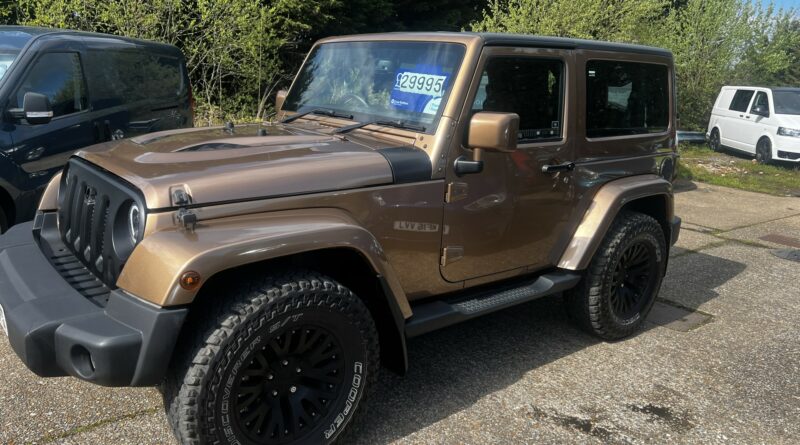Comprehensive Guide to a Used Jeep Pre-Purchase Inspection
When it comes to purchasing a used Jeep, conducting a thorough pre-purchase inspection is crucial to ensure you’re making a sound investment. Jeeps are renowned for their off-road capabilities and durability, but like any vehicle, they can experience wear and tear over time. To avoid potential headaches and unexpected expenses, a comprehensive inspection can provide valuable insights into the Jeep’s overall condition. In this guide, we’ll walk you through the essential aspects of a used Jeep pre-purchase inspection.
- Exterior Inspection:Start by examining the exterior of the Jeep. Look for signs of rust, dents, or scratches. Pay special attention to the frame and undercarriage, as Jeeps are often exposed to rough terrains. Inspect the condition of the tires, ensuring they have even wear and sufficient tread depth. Check for any leaks under the vehicle.
- Engine and Transmission:Lift the hood and inspect the engine bay. Check for oil leaks, loose hoses, or frayed belts. Ensure that all fluid levels are within the recommended range. Start the engine and listen for unusual noises, such as knocking or rattling. Test the transmission by shifting through all gears smoothly, ensuring there are no hesitations or strange sounds.
- Suspension and Steering:Evaluate the suspension system by bouncing each corner of the Jeep. Excessive bouncing or squeaking noises could indicate worn-out shocks or struts. Check the steering for responsiveness and any unusual play. Inspect the ball joints and tie rods for signs of wear.
- Brake System:Assess the brake system by examining the brake pads, rotors, and calipers. Check for even wear and any signs of brake fluid leaks. Test the brakes during a test drive, ensuring they provide smooth and consistent stopping power without any vibrations.
- Electrical Systems:Test all lights, including headlights, taillights, brake lights, and turn signals. Check the functionality of the windshield wipers, power windows, and door locks. Inspect the condition of the battery and ensure that all electronic components, such as the radio and air conditioning, work as intended.
- Interior Inspection:Examine the interior for signs of excessive wear and tear. Inspect the seats, dashboard, and carpets. Check for any unusual odors, which could indicate issues with the ventilation or leaks. Ensure that all gauges and controls are functioning properly.
- Underbody Inspection:Lift the Jeep if possible, and inspect the undercarriage. Look for rust, damage, or any signs of previous repairs. Pay attention to the exhaust system and check for any leaks. A thorough underbody inspection can reveal hidden issues that may not be apparent during a cursory examination.
- Test Drive:Take the Jeep for a test drive to evaluate its performance on the road. Listen for unusual noises, check for vibrations, and assess the overall handling. Test the four-wheel-drive system if applicable. Pay attention to the transmission’s shifting behavior and ensure that the vehicle tracks straight during acceleration and braking.
Investing time and effort in a comprehensive pre-purchase inspection is a wise decision when considering a used Jeep. By carefully examining the exterior, engine, transmission, suspension, brakes, electrical systems, interior, and underbody, you can make an informed decision about the Jeep’s condition. If you’re not confident in your ability to perform the inspection yourself, consider hiring a professional mechanic who specializes in Jeeps or off-road vehicles. A thorough inspection can provide peace of mind and help you enjoy the rugged adventures that a Jeep is known for.
Buying a used VW. Buying used vauxhall, BMW, Jaguar, Ford, Volvo, Range rover, Bentley, Aston Martin, Porsche, Ferrari, Lamborghini, Maserati, Hyundai, Tesla, Honda.

